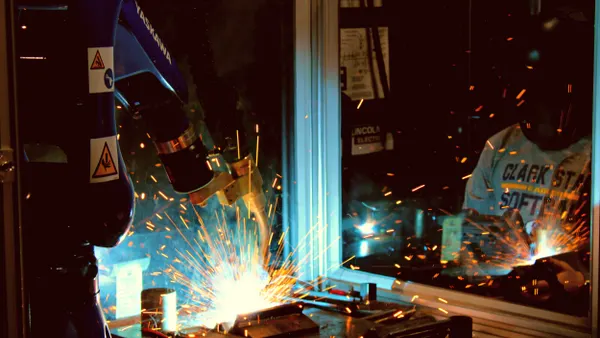Change may be the only constant in today's working world. The technology that has transformed the way we live is shifting the workforce, improving the livelihoods of some employees while leaving others far behind. Embracing change may be the only way to keep pace, but how do training and development professionals keep staff current today and ready for tomorrow?
A recent recent survey from the Association for Talent Development shows that employers aren't prepared. While 92% of respondents said they faced change in the last three years, only 19% said their workforce is highly effective at addressing change. Those numbers suggest a gap in knowledge that will likely widen if nothing is done.
Preparing for and even embracing change can create an agile workforce that adapts quickly to market conditions, customer demands and knowledge gaps. But the challenges may be felt from the bottom up as staff members struggle to work in shifting conditions and learning and development professionals scramble to curate training.
Preparing for the unknown
For starters, employees need to be an environment that doesn't spring change on them unexplained.
"A growth mindset and continuous learning culture are some enablers that help set the environment for a change-able workforce," Kristen Fyfe-Mills, associate director of communications at the Association for Talent Development, told HR Dive via email. Business leaders will need to communicate the benefits of change for the organization as well as the individual. This process begins at the leadership level with an eye on engagement throughout the process.
Fyfe-Mills suggests that strong leadership will be one of the most necessary requirements to assure change initiatives (whatever they look like) and learning will actually have impact. "Leadership is about casting vision, creating buy in, and establishing a path forward," she said. Identifying leaders who excel at communication is key. Businesses must look for leadership candidates who model the importance of learning, who value agility in the workforce and create environments in which all those traits are embraced and practiced.
Transparency and communication also contribute to change efficacy, Fyfe-Mills said: "Change efforts shouldn't come as a surprise to employees."
Find your cheerleaders
Above all, agile, responsive companies survive — and it's the leaders who can embody that.
"Leaders can empower individuals and teams by fostering an environment of creativity and experimentation, encouraging employees to learn through mistakes and failures, and positioning teams to problem solve and deliver," Cindy Keaveney, chief people officer at Randstad Sourceright, told HR Dive in an email. She recommended that organizations reskill existing workforces so employees can "collaborate more extensively across the organization, expect continual change, follow ideas, seek different perspectives, and broaden experiences and competencies."
Keaveney said staff (leaders and front-line workers) should expect and seek out "just-in-time" feedback so they can expand their knowledge base and move confidently through successes and failures with focus and support.
Keeping up with the digital age
Training for digital fluency across all sectors may be the single most important thing business can provide to keep staff current, as well as futureproof. Whether upskilling or planning for future needs, employees will need to work seamlessly with tech. Hiring employees who are adept at new skills and encouraging coworkers to learn from them can piggy-back on an environment of continuous learning.
But tech can't replace everything, of course. "Enabled by technology, people will remain at the core of organizational agility," Keaveney said.
L&D's role in future-proofing employees
As traditional training models continue to go the way of the fax machine, learning professionals must keep their own knowledge base as current as (or ahead of) the offerings other employees need. The sheer volume of materials, means to deliver them and revelations in pedagogy put L&D on the cusp of major change, too. As learning leaders brave the collaboration between education science, technology and organizational need, their role has shifted to curator.
"L&D's role is to break through traditional learning methods so employees can take advantage of [...] hybrid of e-learning, self-created learning and interactive training experiences," Keaveney said.
Beyond digital
While technology may be the single biggest driver of change for today's workforce, there are other changes that can affect employees and their ability to keep pace. From smaller changes, like a new boss, to large initiatives, like a merger, employees will need to be ready and willing to accept that transformation — and development can play a large role in ensuring that's possible.
As an organization's needs grow and change, so will the makeup of its workforce, Keaveney said. Employees will become increasingly augmented by contingent workers, and this melding of workforces will lead to unprecedented exposure to new ways of working that may intrigue traditional staff. "Workers will be exposed to new organizational structures and have opportunities to expand their responsibilities and learn new skills," she added.
Today's workplace bears very little resemblance to that of 20 years ago and the future of work will likely take the business world in directions unimaginable today, but prepping for and embracing change can make sure an employer and its employees aren't lost in the transition.


















